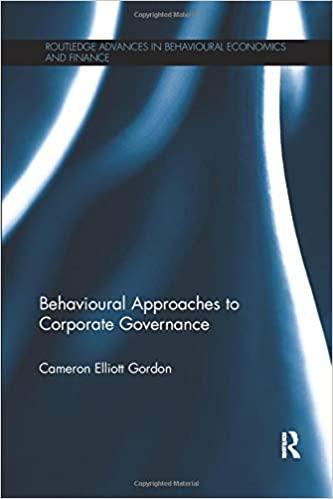Question
1. A convertible bond's value as stock depends on the 1. current rate of interest 2. number of shares into which is convertible 3. price
1. A convertible bond's value as stock depends on the
| 1. | current rate of interest |
| 2. | number of shares into which is convertible |
| 3. | price of the stock |
| a. | 1, 2, and 3 | |
| b. | 2 and 3 | |
| c. | 1 and 2 | |
| d. | 1 and 3 |
2. Convertible bonds have
| 1. | an indenture |
| 2. | perpetual life |
| 3. | a specified conversion price |
| a. | 1 and 2 | |
| b. | 1, 2, and 3 | |
| c. | 1 and 3 | |
| d. | 2 and 3 |
3. Features of convertible bonds include
| 1. | fixed dividends |
| 2. | call feature |
| 3. | maturity date |
| a. | 1 and 2 | |
| b. | 1 and 3 | |
| c. | 2 and 3 | |
| d. | 1, 2, and 3 |
4. As the price of common stock rises,
| a. | the value of convertible bonds falls but convertible stock rises | |
| b. | the value of convertible bonds rises but convertible preferred stock falls | |
| c. | the value of convertible bonds and convertible preferred stock declines | |
| d. | the value of convertible bonds and convertible preferred stock rises |
5. A price to book ratio considers
| a. | profits relative to earnings | |
| b. | price of the stock relative to earnings | |
| c. | profits relative to equity | |
| d. | price of the stock relative to equity |
6. The dividend paid by a preferred stock is usually
| a. | fixed | |
| b. | paid in stock | |
| c. | variable | |
| d. | tax deductible |
7. A P/E ratio considers
| a. | price of a preferred stock relative to earnings | |
| b. | profits relative to equity | |
| c. | price of the stock relative to earnings | |
| d. | profits relative to earnings |
8. Common features of preferred stock include
| a. | fixed, non-cumulative dividends | |
| b. | variable, cumulative dividends | |
| c. | fixed, cumulative dividends | |
| d. | variable, non-cumulative dividends |
9. The price of a convertible bond is often
| 1. | greater than its value as stock |
| 2. | less than its value as stock |
| 3. | greater than its value as debt |
| 4. | less than its value as debt |
| a. | 2 and 3 | |
| b. | 1 and 4 | |
| c. | 1 and 3 | |
| d. | 2 and 4 |
10. Convertible bonds lack
| a. | a maturity date | |
| b. | an indenture | |
| c. | a call feature | |
| d. | dividend payments |
11. According to the dividend-growth model, the value of a common stock depends on
| 1. | the price of the stock |
| 2. | investors' required rate of return |
| 3. | the future growth in dividends |
| a. | 1 and 3 | |
| b. | 1 and 2 | |
| c. | all three | |
| d. | 2 and 3 |
12. The value of convertible preferred stock as common stock depends on
| 1. | the exercise terms |
| 2. | the dividend paid by the preferred |
| 3. | the price of the common stock |
| a. | 1 and 2 | |
| b. | 1, 2, and 3 | |
| c. | 2 and 3 | |
| d. | 1 and 3 |
13. According to the dividend-growth model, the value of a stock does not depend on
| a. | investors' required rate of return | |
| b. | future growth | |
| c. | past dividends | |
| d. | future dividends |
14. The value of a stock should decline if
| a. | the return on the market declines | |
| b. | the firm's beta rises | |
| c. | the risk-free rate declines | |
| d. | the earnings multiple rises |
15. Which of the following is not equity?
| a. | paid-in capital | |
| b. | retained earnings | |
| c. | debentures | |
| d. | preferred stock |
Step by Step Solution
There are 3 Steps involved in it
Step: 1

Get Instant Access to Expert-Tailored Solutions
See step-by-step solutions with expert insights and AI powered tools for academic success
Step: 2

Step: 3

Ace Your Homework with AI
Get the answers you need in no time with our AI-driven, step-by-step assistance
Get Started


